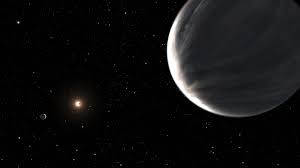Water Worlds : Two Exoplanets

A new study, a team of astronomers have found water worlds, two exoplanets orbiting a red dwarf star.
- These exoplanets are Kepler-138c and Kepler-138d, which were observed using NASA’s Hubble and retired Spitzer space telescope.
- It is the first-time planets are confidently identified as water worlds, a type of planet that was theorized by astronomers to exist for a long time.
- The exoplanets are located in a planetary system that is 218 light years away in the constellation Lyra and are unlike any planets in our solar system.
- The new planet takes 38 days to complete an orbit.
- It is in the habitable zone, meaning it is located in an orbit that receives just the right amount of heat from its star to allow water to exist in a liquid form.
Findings:
- Kepler- 138c and d are made up of ingredients lighter than rock (rocky planets like Earth) but heavier than hydrogen or helium (gas-giant planets like Jupiter).
- This signals the presence of water, up to half of the mass of the twin worlds should be water.
- The volume of the two is three times that of Earth and mass twice as big, they calculated.
- They are also larger-scale versions of Enceladus (Saturn’s moon) and Europa (Jupiter’s moon).
- The density of the twin exoplanets is lower than Earth but comparable to Enceladus and Europa.
- Until now, worlds slightly larger than Earth would likely have rocky features.
- These twin planets of the same size and mass are more massive than Earth but lighter than ice giants Uranus and Neptune.
- But they are different from the planets in our solar system, which is chiefly composed of rocky planets like Earth and gas giants like Jupiter.




